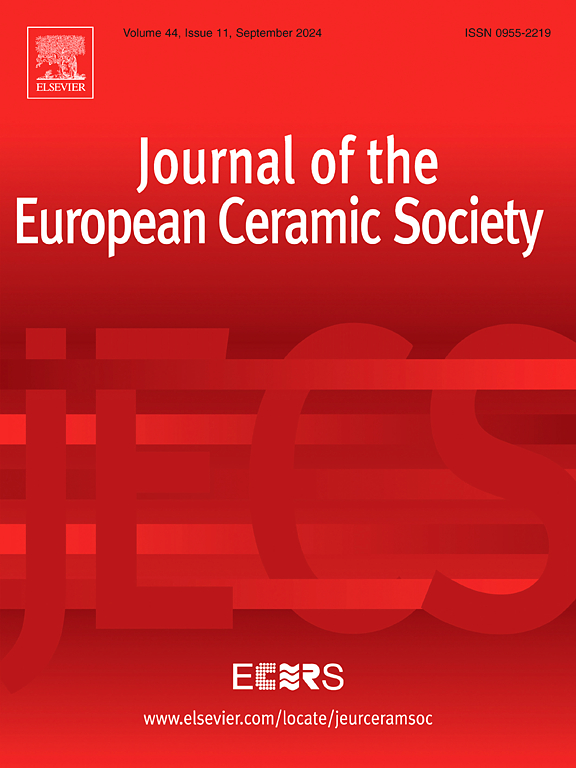Influence of powder characteristics on the rheology of ceria-based screen-printing pastes for solid oxide cell applications
IF 5.8
2区 材料科学
Q1 MATERIALS SCIENCE, CERAMICS
Journal of The European Ceramic Society
Pub Date : 2025-05-29
DOI:10.1016/j.jeurceramsoc.2025.117570
引用次数: 0
Abstract
Screen-printing is a widely utilized method for fabricating solid oxide electrolysis cells (SOECs), a promising technology for efficient hydrogen production. This study focuses on the rheological characterization of screen-printing pastes, emphasizing the influence of ceramic powder properties on rheological behavior and layer features. Conventional metrics such as viscosity, or binder and ceramic content provided in wt% are shown to inadequately describe paste characteristics. Instead, we propose the use of dynamic rheological properties, including damping factor and yield point, and introduce a bimodality coefficient to be able to quantify and correlate particle size distribution shapes with these rheological properties. Results demonstrate that dry layer thickness and dimensional accuracy correlate strongly with the damping factor, revealing that pastes with higher damping factors exhibit thinner layers due to increased viscous behavior. Additionally, increasing the amount of binder in relation to the specific surface area (SSA) of the ceramic particles weakens the 3-dimensional paste network, decreasing yield points and shifting paste behavior toward predominantly viscous behavior. Analysis of SSA as well as particle size distribution (PSD) and their correlation with rheology highlights the destabilizing effect of agglomerates in asymmetrical and bimodal particle size distributions, underscoring the need for comprehensive powder characterization.
粉末特性对固体氧化电池用二氧化铈基丝网印刷浆料流变性的影响
丝网印刷是一种广泛应用的固体氧化物电解电池(soec)制造方法,是一种有前途的高效制氢技术。本研究重点研究了丝网印刷浆料的流变性能,强调了陶瓷粉体性质对浆料流变性能和层状特征的影响。传统的指标,如粘度,或以wt%提供的粘合剂和陶瓷含量,不能充分描述膏体的特性。相反,我们建议使用动态流变特性,包括阻尼因子和屈服点,并引入双峰系数φ,以便能够量化和关联粒径分布形状与这些流变特性。结果表明,干层厚度和尺寸精度与阻尼系数密切相关,表明阻尼系数越高,由于粘性行为的增加,膏体层越薄。此外,增加与陶瓷颗粒的比表面积(SSA)相关的粘合剂的量削弱了三维膏体网络,降低了屈服点,并将膏体行为转向主要的粘性行为。对SSA和粒径分布(PSD)的分析及其与流变学的相关性强调了团聚体在不对称和双峰粒径分布中的不稳定作用,强调了对粉末综合表征的需要。
本文章由计算机程序翻译,如有差异,请以英文原文为准。
求助全文
约1分钟内获得全文
求助全文
来源期刊

Journal of The European Ceramic Society
工程技术-材料科学:硅酸盐
CiteScore
10.70
自引率
12.30%
发文量
863
审稿时长
35 days
期刊介绍:
The Journal of the European Ceramic Society publishes the results of original research and reviews relating to ceramic materials. Papers of either an experimental or theoretical character will be welcomed on a fully international basis. The emphasis is on novel generic science concerning the relationships between processing, microstructure and properties of polycrystalline ceramics consolidated at high temperature. Papers may relate to any of the conventional categories of ceramic: structural, functional, traditional or composite. The central objective is to sustain a high standard of research quality by means of appropriate reviewing procedures.
 求助内容:
求助内容: 应助结果提醒方式:
应助结果提醒方式:


